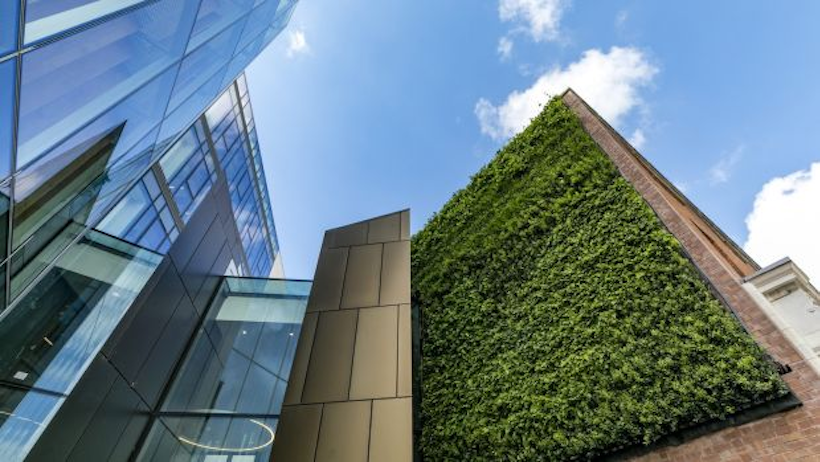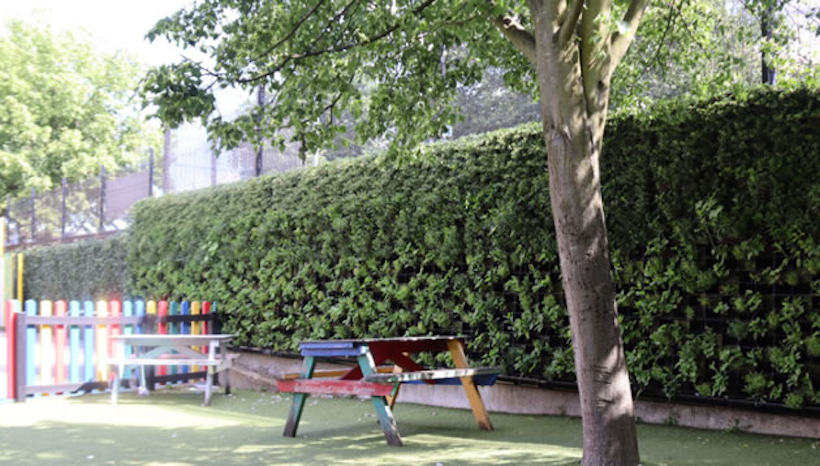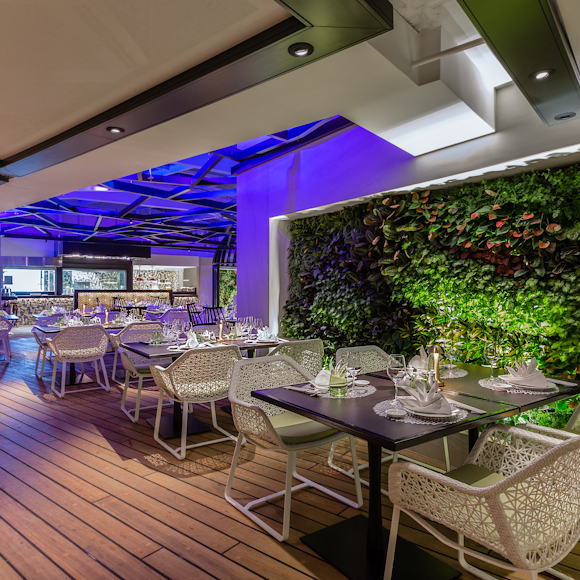In June of this year, it was announced that schools throughout the borough of Westminster will undergo “clean air inspections” to make sure the local environment is safe for students. These inspections will focus on nitrogen dioxide levels, and will look at 19 primary schools over an eighteen-month period. Depending on each inspection’s finding, schools will receive a series of recommendations to improve the air their students breathe. These recommendations include reducing nearby pollution from traffic and adding features like green roofs and living walls. Right now, Westminster’s schools are lacking in clean air and the only thing that can change it is a green revolution.
The clean air inspections are being led by Westminster City Council, who are responsible for 87 schools in the London borough. According to recent research, 85 of these 87 schools are in areas which break the annual limit for nitrogen dioxide (NO2). Breathing in raised levels of nitrogen dioxide can lead to respiratory issues, particularly in children. The council-cited research links the high levels of air pollution to 40,000 deaths in England every year. According to Westminster City Council leader Nickie Aiken, these checks are fundamental:
The clean air inspections will take place in 19 schools over an eighteen-month period, checking the air quality on and around school grounds. When the nitrogen dioxide levels have been measured, each school’s head teacher will be given a series of recommendations according to the severity of their school’s situation.
Depending on the nitrogen dioxide levels in the area, head teachers will be advised on a series of measures that can create cleaner air for students. These measures include:
- Road closures (both temporary and permanent)
- Banning the worst polluting vehicles from driving near schools
- Consolidation of van deliveries to schools
- Installing air filters and electric vehicle charging points
- Relocating bus stops
- Adding greenery
While all of these measures will help with local air pollution, some are more practical than others. For example, relocating bus stops can make it more difficult for children to get to and from school, and fewer van deliveries may affect the school’s access to resources. Measures that involve closing roads or banning vehicles affect the wider community and may be difficult to implement consistently. A sure-fire way to have cleaner air without any disruption to the school is the last point on the list: add greenery. Because Westminster is in the heart of London, many schools might initially dismiss this option, believing they don’t have enough space to add greenery. That may be true for traditional greenery, but not for living walls and green roofs.
Because of Westminster borough’s central location, it can be hard to curb air pollution by planting trees and flowers. Space is tight in central London, but that doesn’t mean there’s no room for greenery. Living walls are a popular option in dense urban areas, because you can add greenery without taking up any space on the ground. Green roofs are also a great option for any horizontal space that isn’t currently being used. Roofs are the most popular option, but our GrufeKits can also be fitted on sheds and even in between railway tracks. The versatility of these features means they can be placed anywhere you can find space.

Green roofs and living walls are fantastic ways to reduce air pollution because they remove nitrogen dioxide from the air. The plants used in your living wall can be tailored to fit in with the local ecosystem, making them especially efficient at supporting the local environment. The foliage absorbs pollutants and expels oxygen, making the surrounding air cleaner every day. Green roofs and living walls also help to reduce noise pollution and flooding risks, making the area safer in multiple ways.
At Viritopia, we know that green roofs and living walls can help schools because we’ve already seen the effects. We had the pleasure of working on the Chiswick Oasis project, installing a 400ft living wall in St. Mary’s Primary School. Before this project, St. Mary’s was listed as one of the most polluted schools in London. The school’s playground runs directly alongside a six-lane road, and the air pollution levels exceeded the World Health Organisation’s recommended limits. Local parents and MPs worked together to find a solution to local air pollution, and Viritopia were delighted to assist. This not-for-profit project included designing and installing the wall, and the Viritopia team will continue to maintain the wall for five years, free of charge.

The living wall in St. Mary’s is providing cleaner air to its pupils. The wall absorbs pollutants like nitrogen dioxide and pumps oxygen into the atmosphere. The Chiswick Oasis project is a fantastic example of what can be achieved by installing a feature like a green wall in a primary school. The living wall will help to reduce air pollution and protect students from the ill health effects that too much nitrogen dioxide can create.
Almost every school in the borough of Westminster is in an area with unhealthy levels of nitrogen dioxide in the air. Westminster City Council’s clean air inspections will help schools to identify remedies for this situation, but some will be more effective than others. What Westminster’s schools need is a green revolution. Installations like green roofs and living walls are perfect because they remove nitrogen dioxide from the air, replacing it with oxygen, whilst making the most of wasted spaces and causing minimum disruption. Our work with St. Mary’s Primary School in Chiswick has proven a huge success, showing the London area that green roofs and living walls are great ways to combat air pollution in schools.


